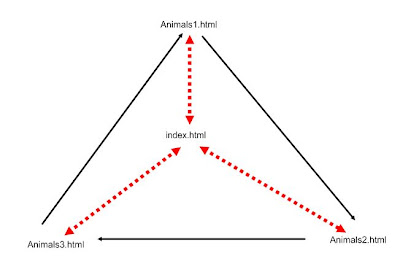WebQuest focuses on web-searching, evaluating and processing information in order to solve a problem. It develops above all critical thinking and creativity.
Kahoot is simply fun - online-based quiz engine, enabling the participants to use their mobiles, answer the questions and compete.
_________________________________
1. SCENARIOS
Examples of scenarios:
http://www.worldwarfighter.com/hajikamal/activity/
Reptile Island
Inside the Pyramid
Driving Home
Samurai
Post-Apocalyptic Survival
http://sunil-rao.com/wp-content/uploads/Inner-Vision.swf
While writing the scenario, define the following:
1. Target group - age, proficiency
2. Task - what the class should do, identifying the final outcome and product
3. Aims and objectives: what the class will learn in these fields:
factual knowledge
language (vocabulary, reading skills...)
communicative skills
social skills
Make a list of keywords to help the class read and understand.
Computers skills and specifics:
create a correct, logical text
write the whole scenario into a single text file first
add illustrations and graphics to support reading with undestanding
For brainstorming, you may want to use this software: http://www.mindmeister.com/
Evaluation criteria:
Creativity
The applied reading skills
Ethical and informational dimensions
Aesthetics
HELP for TWINE
easy start with twine
More at
http://blog.cathy-moore.com/2011/07/sample-branching-scenario-cool-tool/
http://blog.cathy-moore.com/2010/05/elearning-example-branching-scenario/
http://blog.cathy-moore.com/2018/04/3-ways-to-help-people-learn-from-mistakes-in-branching-scenarios/
__________________________________

A WebQuest is an effective tool for USING English. In the following weeks, you will find out how it works, and we will discuss the design of your first WebQuest.
REMEMBER: A good WebQuest
- uses Internet resources (written in good authentic English)
- requires independent thinking, not mechanic copying from references
- is based on information processing: the students search for facts, evaluate, and come to their your own conclusions
WebQuest Home Page
TASK
1. Explore the web to find out what a WebQuest is. What is the difference between a WebQuest and a LanguageQuest?
2. Identify an example of good practice - a WebQuest which you consider to be of a high quality - and enter its URL to the comments of this blog.
Example: Greece or China?
A tool for making and publishing presentations online
WebQuest characteristic:
• information search
• information processing (THINKING, evaluating, comparing, choosing, combining, analysis, synthesis…)
• creativity
• autonomy
• fun
What is necessary:
• clear instructions
• clear description of the final product
• adequate choice of internet sources, with comments
WebQuest from the T’s point of view:
• choosing topic and task
• TIME – web search, detailing the process, clear and logical instructions
• focus on information processing – prevent plagiarism
• focus on authentic English resources
WebQuest from the Ss point of view:
• TASK
• instructions
• tips + web URLs
• final product
• autonomy + freedom of choice
• creativity
Look at the WebQuest template to learn more about its structure.
Inspiration:
WebQuest 1 - Canterbury Tales
WebQuest 2 - Animals
WebQuest 3 - A Trip to Egypt
WebQuest 4 - A Diary of the Survivor
__________________________________
https://kahoot.com
Register, and try out!












